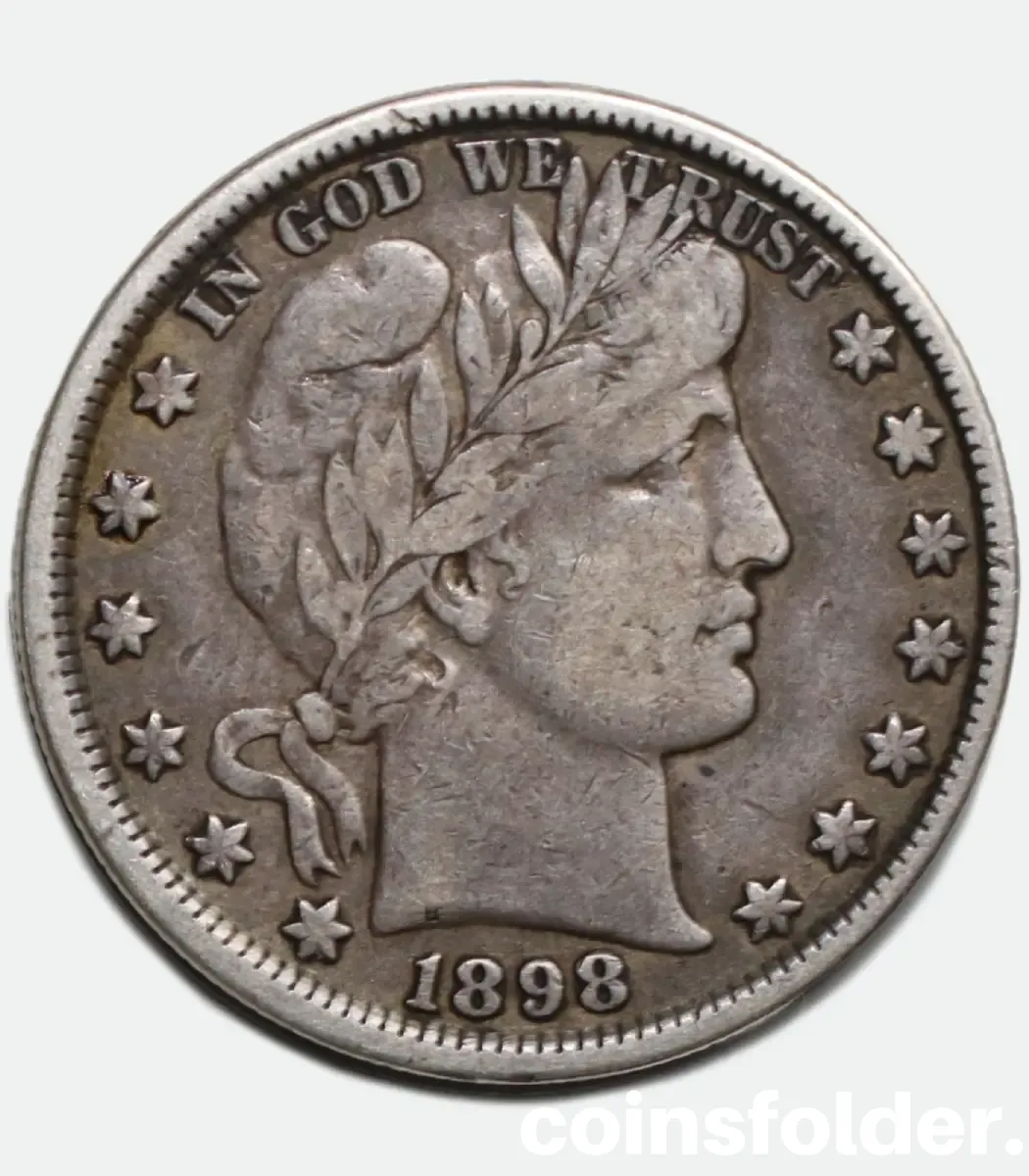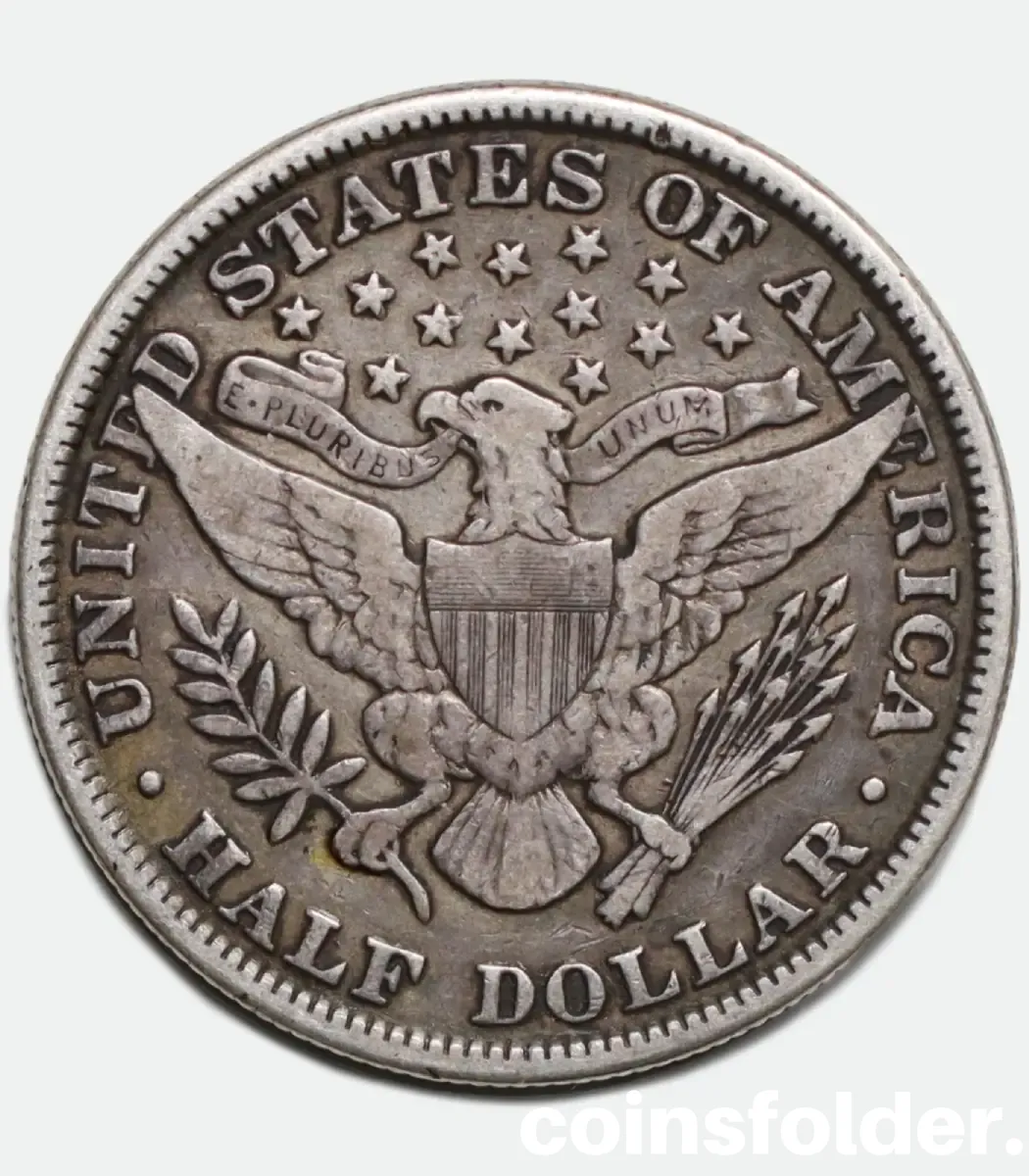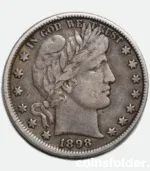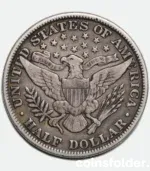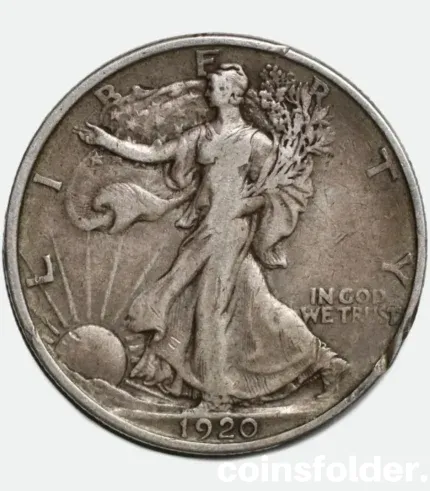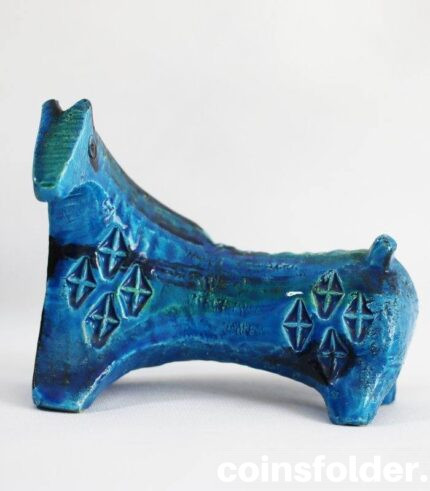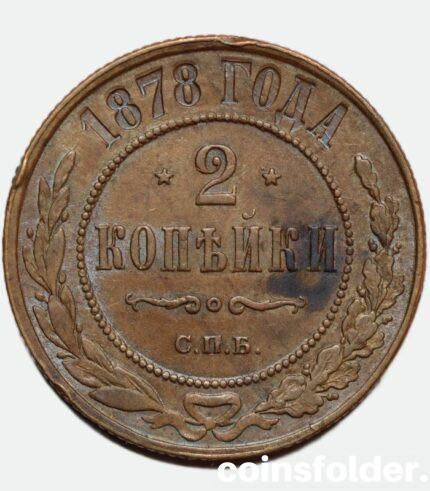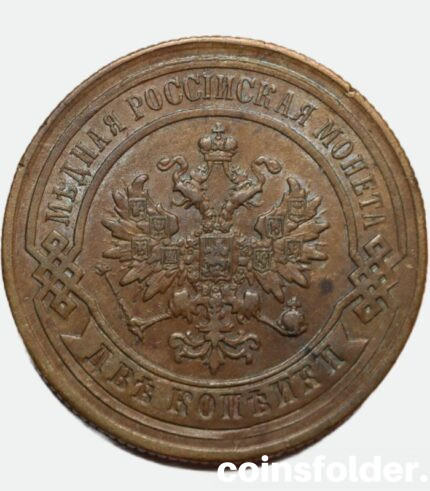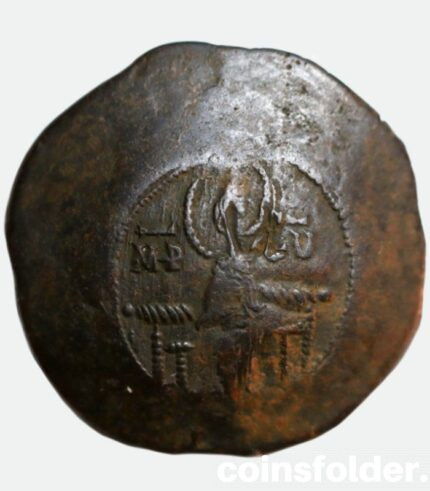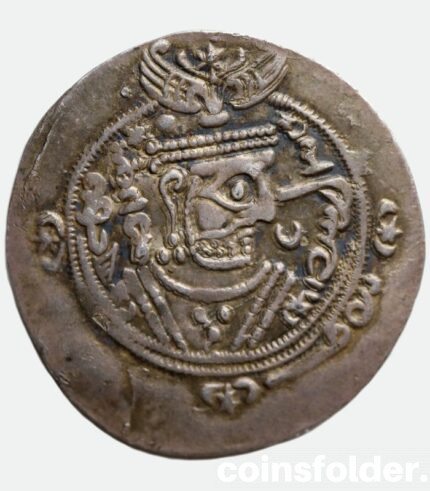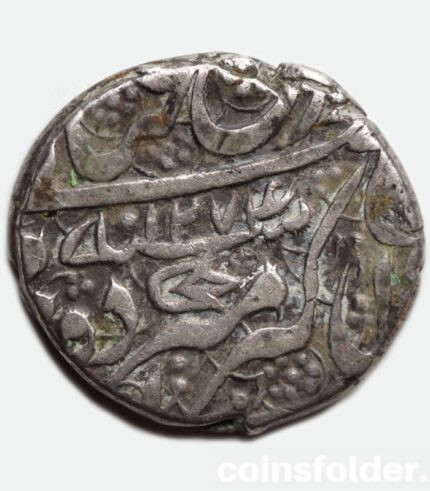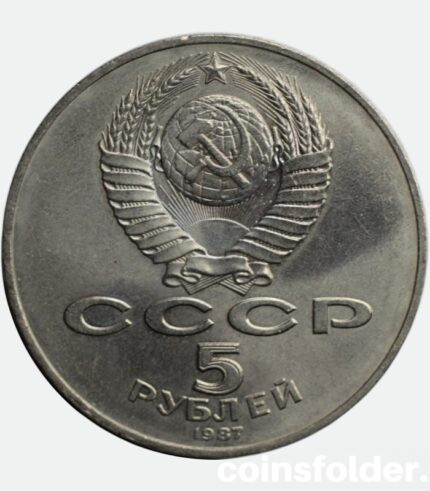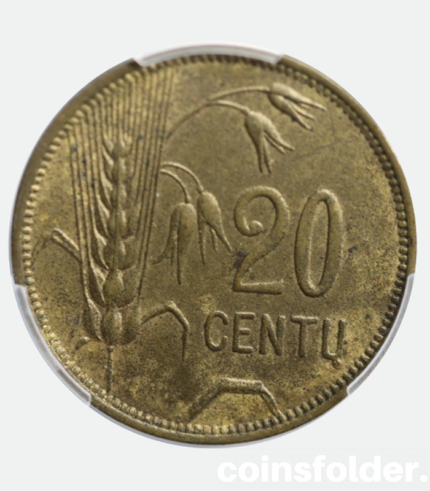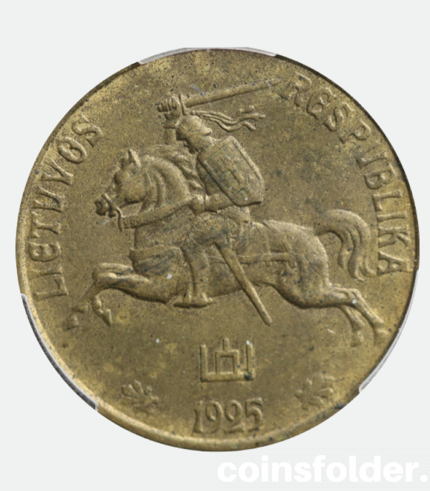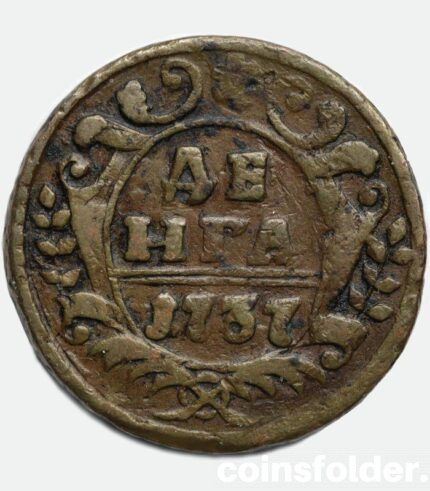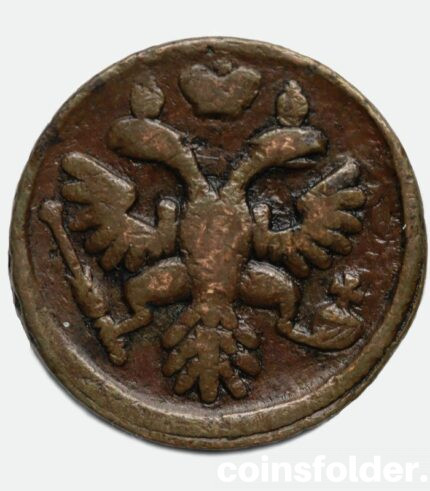The 1898 Barber Half Dollar, part of the Barber coinage series, is a significant piece of American numismatic history. Named after its designer, Charles E. Barber, Chief Engraver of the U.S. Mint, the Barber series includes the dime, quarter, and half dollar, all bearing similar designs. Minted from 1892 to 1915, the Barber Half Dollar is especially valued by collectors for its historical context, aesthetic appeal, and the craftsmanship emblematic of turn-of-the-century American coinage. In the year 1898, the Barber Half Dollar was struck in three locations: Philadelphia (no mintmark), New Orleans (“O” mintmark), and San Francisco (“S” mintmark), with each mint issuing a different number of coins and presenting varying levels of rarity.
The Barber Half Dollar has a composition of 90% silver and 10% copper, a standard for U.S. coins of that era, giving it both intrinsic and numismatic value. Weighing 12.5 grams, the coin has a diameter of 30.6 mm, making it slightly larger than the modern half dollar. The obverse of the coin features the profile of Lady Liberty wearing a Phrygian cap with a laurel wreath, symbolizing freedom and victory. Around Liberty’s head, the motto “IN GOD WE TRUST” is inscribed at the top, with “LIBERTY” displayed on the headband and “E PLURIBUS UNUM” circling the reverse along with 13 stars, representing the original colonies.
The reverse of the Barber Half Dollar depicts a heraldic eagle, an image influenced by the Great Seal of the United States. The eagle is clutching an olive branch and arrows, symbolizing a desire for peace and the readiness for defense if necessary. Above the eagle is a banner with the national motto “E PLURIBUS UNUM,” while the denomination “HALF DOLLAR” is inscribed below. The intricate details in the eagle’s feathers, olive branches, and arrows are appreciated by collectors for their fine craftsmanship and historical symbolism.
The 1898 Barber Half Dollar’s appeal also lies in its collectibility. Coins from the Philadelphia mint are generally more accessible than those from New Orleans or San Francisco, making the “O” and “S” mintmarked coins more sought after in higher grades. Condition plays a crucial role in determining the coin’s value, with specimens in good and fine conditions being accessible, while those in higher grades (such as Very Fine or Mint State) commanding premium prices due to their scarcity.
The Barber Half Dollar series represents a transitional era in American coinage, preceding the Liberty Head designs that followed in the early 20th century. Its silver composition, classic design, and historical resonance make the 1898 Barber Half Dollar a prized piece for both seasoned collectors and those new to American coins. Collecting Barber Half Dollars offers an opportunity to own a tangible piece of history, with each coin reflecting the artistry and values of the United States at the turn of the century.

 Art
Art Asian
Asian Banknotes
Banknotes Numismatics
Numismatics Porcelain
Porcelain Buttons
Buttons Jewelry
Jewelry Silverware
Silverware Ceramics
Ceramics Militaria
Militaria Books
Books Glassware
Glassware Leatherware
Leatherware Philately
Philately Other antique
Other antique Gifts
Gifts Accessories & Services
Accessories & Services